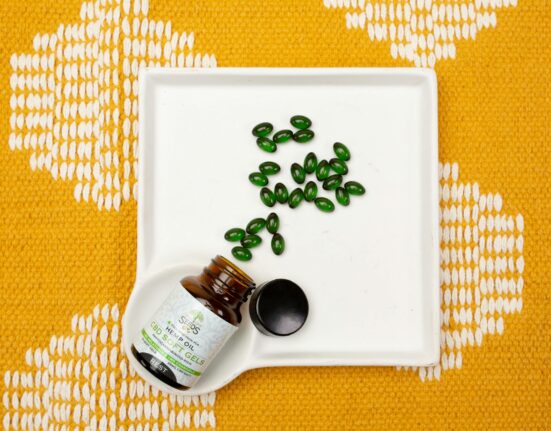Imagine going 30 days without added sugar—no sodas, cookies, or that spoonful in your coffee. It’s a challenge that’s gaining popularity, and for good reason. Cutting sugar can lead to big changes in your body, from more stable energy levels to fewer cravings. Of course, it’s not all smooth sailing—headaches and mood swings might pop up as your body adjusts. But the potential rewards, like better focus and even improved skin, make it worth exploring. Curious about what really happens when you say goodbye to sugar for a month? Let’s break it down.
What Is a 30-Day Sugar Detox?
A 30-day sugar detox is all about eliminating added sugars and artificial sweeteners from your diet to help reset your body and habits. It’s a commitment to eating clean, nutrient-dense foods that nourish your body while avoiding the sneaky sugars hiding in your daily meals. This detox isn’t just about skipping dessert; it’s about giving your body a break from the constant influx of added sugar, which studies have linked to energy crashes, weight gain, and even chronic diseases. It’s not a fad—it’s a deliberate choice to focus on sustainable health.
The Rules of Quitting Sugar
If you’re considering a sugar detox, you need clear and simple ground rules to set yourself up for success. Here are the key principles:
- Say No to Added Sugars: Cut out sugars in all forms, including refined table sugar, syrups, and artificial sweeteners. This includes things like sodas, flavored coffee creamers, and those candy bars lying around.
- Read Labels Like It’s a Hobby: Sugar hides in unexpected places, so check food labels carefully. Terms like “sucrose,” “high-fructose corn syrup,” and even “organic cane sugar” signal added sugars.
- Avoid Processed Foods: Processed snacks, frozen meals, and fast food often come loaded with hidden sugars. Stick to whole, minimally-processed ingredients.
- Focus on Whole, Nutrient-Dense Foods: Fill your plate with fresh veggies, lean proteins, healthy fats, and whole grains. These foods support your body’s natural detox process and keep you fuller longer.
- Drink Water Instead of Sweetened Beverages: Swap sugary drinks for water, herbal teas, or coffee without added sweeteners.
The goal here is to detox your body and retrain your taste buds. Once you start letting your palate adjust, you may be surprised by how sweet fresh fruit or roasted vegetables naturally taste.
For more insights into strategies and benefits, check out this guide on the 30-Day No Sugar Challenge.
Common Sources of Hidden Sugars
Even if you skip the donuts, sugar can sneak its way into your diet in surprising ways. Many processed and packaged foods include added sugars for flavor, preservation, or texture. Here are some common sources you might not suspect:
- Condiments: Ketchup, barbecue sauce, and salad dressings often contain significant amounts of sugar. A single tablespoon of ketchup, for instance, can have around 4 grams of sugar.
- Flavored Yogurts: Those fruity varieties of yogurt can pack as much sugar as a dessert. Aim for plain, unsweetened versions and add fresh fruit if you need a touch of sweetness.
- Sauces and Marinades: Pasta sauces, teriyaki sauces, and stir-fry marinades frequently have added sugars. Check the labels or make your own to control what goes in.
- Breakfast Cereals: Even seemingly “healthy” cereals can be sugar bombs. Look for brands with minimal to no sugar and a focus on whole grains.
- Energy and Snack Bars: These might be marketed as healthy options, but they often deliver more sugar than a candy bar. Read the labels to make informed choices.
- Beverages: Sports drinks, energy drinks, and even fruit juices are often loaded with sugar. Stick with water or unsweetened beverages to stay hydrated.
For more details about spotting hidden sugars in food, you can visit resources like Hopkins Medicine’s guide.
By being proactive and knowing what to avoid, you’ll navigate the detox confidently without falling into the sugar trap. Sometimes, it’s as simple as swapping jarred pasta sauce for a homemade version or choosing an olive oil and vinegar dressing over the pre-mixed kinds.
What Happens Physically When You Quit Sugar?
Deciding to quit added sugar for 30 days may sound simple, but it triggers a series of noticeable changes in your body. Sugar isn’t just a sweet treat you can easily ignore—it’s involved in processes that impact everything from your energy levels to your weight. Let’s take a closer look at how your body physically reacts when you drop sugar from your diet.
The First Few Days: Withdrawal Symptoms
The first few days off sugar can feel rough. You might experience headaches, cravings, mood swings, or even fatigue. Why does this happen? Your brain and body have grown accustomed to the dopamine boost sugar provides, so its absence can lead to withdrawal-like symptoms. This is especially true if you’ve been consuming large amounts of sugar daily.
Think of it like caffeine withdrawal. Without sugar to spike your blood glucose, your energy dips as your body struggles to adjust. You may also feel irritable, much like someone breaking up with an old habit. These symptoms usually peak within the first week and start to subside shortly thereafter.
To ease the transition, drink plenty of water, get enough sleep, and include more protein and fiber in your meals. These steps can help stabilize your blood sugar and reduce cravings. For more in-depth information, check out this guide on sugar withdrawal symptoms.
Improved Energy Levels
As your body becomes accustomed to functioning without frequent sugar highs, your energy levels begin to stabilize. Sugar causes major spikes and crashes in blood glucose, which is why you might feel energized one minute and drained the next after a sugary snack.
Without sugar dictating your energy, your body will learn to rely on more consistent sources of fuel, like complex carbs, protein, and healthy fats. This can mean no more post-lunch slumps and better focus throughout the day. It’s like trading a rollercoaster for a smooth, open highway.
A surprising benefit? Your sleep quality might also improve as sugar detoxes can ease insomnia caused by sugar-induced nighttime energy spikes. You’ll wake up feeling refreshed and ready to tackle the day.
Weight Changes
One of the most noticeable physical changes when you quit sugar is with your weight. By cutting out added sugars, you naturally lower your calorie intake—after all, sugary drinks, desserts, and snacks are empty-calorie culprits. This leaves room for nutrient-dense foods that keep you fuller for longer.
Removing sugar also improves your fat metabolism, meaning your body becomes better at burning stored fat for energy. Over time, this can lead to weight loss, especially if paired with regular physical activity. Keep in mind, weight changes can vary from one person to another based on factors like total calorie intake, diet quality, and metabolism.

Photo by Anna Tarazevich
Optimizing your diet without sugar is like giving your body a reset button, helping you reach sustainable fitness goals. Curious for more? Read this guide on the 30-Day No Sugar Challenge for additional insights.
The Emotional Journey: How Cutting Sugar Impacts Mood
Reducing or eliminating sugar from your diet isn’t just about physical health—it can seriously impact your emotional state. Sugar influences dopamine, one of the brain’s “feel-good” chemicals, so cutting it out might feel like you’re losing a comfort zone. However, this emotional journey comes with ups and downs that lead to long-term stability and clarity. Let’s dive into what you might experience.
Initial Irritability or Anxiety
In the first week of quitting sugar, emotional changes can hit hard. Why? Sugar withdrawal disrupts the brain’s dopamine production. When you’re used to that sweet reward from a cookie or soda, suddenly removing it can leave you feeling anxious or irritable. It’s a similar reaction to breaking other addictive habits.
Common emotional symptoms include:
- Increased irritability or short temper
- Frequent feelings of restlessness
- A heightened sense of stress or unease
- Low-level anxiety, occasionally combined with cravings
These effects are temporary and typically lessen after the first week or two. Just like caffeine withdrawal can leave you cranky, eliminating sugar also challenges your emotional equilibrium. Staying hydrated, eating meals packed with protein and healthy fats, and getting sufficient sleep can ease you through this period.
According to resources on sugar withdrawal symptoms, the emotional rollercoaster smooths out as your brain adjusts to functioning without sugar-fueled dopamine spikes.

Photo by RDNE Stock project
Long-Term Mood Stability
Once you’ve moved past the initial withdrawal, you’ll start noticing a steady improvement in your mood. Without sugar-induced highs and crashes affecting your blood sugar, emotional stability becomes the new norm. You might find yourself with a more balanced, even temperament.
Sugar can lead to quick energy boosts followed by sharp crashes. These crashes often create irritability or sadness, closely resembling mood swings. By steering clear of these spikes, your brain relies on steadier, more sustainable energy resources like protein and complex carbohydrates.
Benefits in the long run may include:
- Fewer mood swings: Balanced blood sugar keeps your emotional state level.
- Reduced anxiety: Foods high in added sugar have been linked to increased anxiety risk. Cutting them can relieve overly stimulated nerves.
- Improved focus and clarity: With optimized blood sugar levels, cognitive performance and emotional resilience often improve.
Data from the Mental Health Benefits of Cutting Out Sugar suggests that removing excess sugar may help alleviate conditions like depression or chronic stress. It’s a reminder that what you eat truly affects how you feel, mentally and emotionally.
Over time, quitting sugar isn’t just about avoiding the bad stuff—it’s about giving yourself the chance to thrive emotionally, one stable day at a time.
The Benefits After 30 Days Without Sugar
Breaking up with sugar for 30 days can feel challenging at first, but the benefits speak for themselves. By the end of the month, many people notice a range of changes, from glowing skin to boosted health. Let’s explore the remarkable ways your body can transform when sugar is off the table.
Clearer Skin and Reduced Inflammation

Photo by Nataliya Vaitkevich
Sugar has a way of showing up on your face—literally. High intake of added sugar can spike inflammation in the body, which often manifests as acne, redness, or dull skin. This happens because sugar triggers an insulin response, which then boosts oil production and clogs pores.
Quitting sugar allows your skin to recover. Over 30 days, inflammation subsides, giving your complexion a chance to breathe. Many people report fewer breakouts, reduced redness, and healthier, more radiant skin. Beyond aesthetics, reducing inflammation improves your overall health by calming internal processes that contribute to chronic issues like joint pain and long-term skin conditions.
For a deeper dive into how sugar impacts your skin health, check out this guide on sugar and inflammation.
Healthier Eating Habits
Ever noticed how sugar cravings can feel insatiable? Added sugars hijack your taste buds, conditioning you to desire overly sweet foods. After a month without them, something remarkable happens—your taste buds reset. Suddenly, natural sugars from fruits or even a ripe tomato taste much sweeter.
This shift leads to more mindful eating. With sugar out of the equation, there’s room for nutrient-rich, whole foods in your diet. You’re less likely to indulge in processed snacks and more inclined to choose wholesome meals that keep you full longer. In fact, studies suggest that reducing sugar helps curb overall cravings, paving the way for sustainable, healthier habits.
For helpful tips on cutting down sugar in your diet, check out how reducing sugar can change your eating habits.
Lower Risk of Chronic Diseases
One of the most profound benefits of quitting sugar is its potential to reduce your risk of chronic diseases. Added sugars contribute to a host of health problems, from heart disease to type 2 diabetes. Too much sugar increases triglycerides, raises blood pressure, and causes insulin resistance—all risk factors for long-term health concerns.
After 30 days sugar-free, you’re giving your body a chance to stabilize. Blood sugar levels become more balanced, reducing strain on your pancreas and lessening the risk of prediabetes or diabetes over time. Plus, better heart health—thanks to lower cholesterol and normalized blood pressure—adds longevity to your life.
Want to know more? Click here to learn about how eliminating sugar affects your long-term wellness from this comprehensive guide.
By the end of your 30-day sugar detox, both your body and mind will thank you. The changes might start small, but you’ll notice them stacking up into a healthier, more energized version of yourself. If you’re ready to dig even deeper into the rewards of a sugar-free lifestyle, keep reading to discover further transformations.
Tips for Success During the 30-Day Detox
Starting a 30-day sugar detox can feel overwhelming, especially if you’re used to reaching for quick, sugary snacks. But trust me, a little preparation and mindfulness can make all the difference. By setting goals, staying accountable, and understanding where hidden sugars exist, you’re paving the way for a smoother journey. Let this be your guide to success.
Plan Your Meals in Advance

Photo by Nataliya Vaitkevich
Meal planning is key during a sugar detox. It’s like having a reliable map when you’re driving through unfamiliar territory. Without a plan, you’re more likely to cave into cravings or find yourself in situations where sugary options seem like the only choice.
- Prep snacks ahead of time: Keep nuts, hard-boiled eggs, or veggie sticks on hand to reach for when hunger strikes.
- Stock your pantry with whole foods: Fill it with healthy staples like quinoa, oats, beans, and unsweetened nut butter.
- Batch cook meals: Dedicate a day each week to cook and freeze meals like soups, casseroles, or grilled chicken with roasted vegetables so you’re always ready.
By planning ahead, you’ll avoid impulse decisions and keep your focus on nourishing foods that align with your detox goals. For more inspiration, this guide on a 30-Day Sugar Detox Plan offers helpful meal ideas.
Find Support and Stay Accountable
You don’t have to do this alone. Having people in your corner—whether it’s a friend, family member, or an online group—can provide motivation and encouragement.
- Join a support group: Online communities, like the Sugar Detox Support Group on Facebook, are great for connecting with people who share your goals and challenges.
- Check in regularly: Set a time to report your progress to a supportive friend or group. A quick message can keep you accountable and remind you why you started.
- Celebrate small wins: Did you make it through a tough workday without giving in to sugary snacks? Acknowledge that success—it’s a big deal!
Research has shown that shared goals can improve success rates because accountability creates a sense of responsibility and motivation. Need more resources? Check out this list of Sugar Addiction Support Options for additional guidance.
Read Labels Religiously
If there’s one habit to master during a sugar detox, it’s reading food labels. Sugar is sneaky, hiding in foods you’d never suspect—like salad dressings, marinades, and even “healthy” protein bars.
Here’s what to look for:
- Check the ingredients list: Look for obvious terms like sugar, but also watch out for less apparent names, such as high-fructose corn syrup, maltodextrin, and sucrose.
- Review the nutritional facts: Some products may list “0 grams of sugar” but still contain artificial sweeteners under other names.
- Beware of “natural sugars”: Honey, agave syrup, and even many fruit-based syrups still spike blood sugar levels.
Knowing what’s in your food can help you stay within your detox guidelines and avoid sabotaging your progress. For more insight into spotting hidden sugars, you might want to read How to Spot Sugar on Food Labels.
By sticking to these tips, you’re setting yourself up for success. Small efforts, like reading labels and planning meals, stack up to massive wins over time!
Conclusion
Quitting sugar for 30 days may seem tough at first, but the changes it inspires are worth it. From more stable energy levels to clearer skin, the physical and mental rewards create real momentum for better health. You’ll reset your cravings, make smarter food choices, and potentially lower your long-term health risks.
Consider giving the 30-day sugar detox a try—not as a restriction, but as an investment in yourself. Small shifts can lead to lasting improvements, and every step forward counts. If nothing else, you’ll better understand how sugar affects your body and mind, and that knowledge is powerful.
Ready to get started? Take it one day at a time and see firsthand how cutting sugar can transform your well-being.








